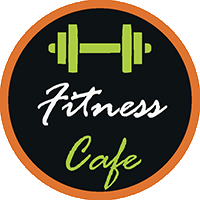#theblog
Over exercising can halt your muscle and fat loss progess
 It is universally recognized by medical practitioners and the public that regular exercise is beneficial to health. Psychologically and physiologically, there is no doubt that indulging in activities that flex the muscles and raise the heart rate brings enormous benefits and represents an important part of a healthy lifestyle.
It is universally recognized by medical practitioners and the public that regular exercise is beneficial to health. Psychologically and physiologically, there is no doubt that indulging in activities that flex the muscles and raise the heart rate brings enormous benefits and represents an important part of a healthy lifestyle.
ARE YOU OVER EXERCISING?
But sometimes people rigorously train because they’re enthusiastic about a certain sport and end up practicing overzealously. Some are so anxious to reach fitness goals that they train too frequently and/or vigorously. All this eventually results in injuries such as pulled muscles, and stress fractures etc.
What is Over Exercising?
Over-exercising, also called compulsive exercising or obligatory exercising, is when an individual engages in strenuous physical activity to the point that it is unsafe and unhealthy. A regular exercise program provides many benefits, and it is normal to be mildly sore and a little tired following your workouts. You might even push yourself beyond your limits at times, and that’s okay too. But, if you overdo it without allowing your body to recover, it can break down.
How much is Too Much?
To maintain a normal healthy state of the body, 2,000-3,500 calories should be burned each week through aerobic exercises, such as running, cycling and the like. Thirty to forty-five minutes a day, five or six days a week is sufficient to acquire health benefits. Exercise beyond 3,500 calories per week, however, leads to decreased physical benefits and increased risk of injury.
What are its Symptoms?
Basically, when you train beyond your body’s ability to adapt to exercise in a positive way, you may start to experience any/many of the over exercising symptoms.
Feeling tired and lacking energy
Persistent muscle soreness
Difficulty sleeping
Increased resting heart rate
Headaches
Irritability
Loss of motivation
Depression
Decreased appetite
Sudden weight loss
Increased incidence of injury
Increased susceptibility to infections
What are its dangers?
The physical risks are numerous. A very real risk with this disorder is dehydration if the sufferer is not drinking enough fluids. Over-exercise can also lead to insomnia, depression and fatigue. Additional physical side effects include muscular and skeletal injuries, like shin splits, bone fractures, arthritis, or damage to cartilage and ligaments. Too much exercise can lead to the release of excessive free radicals, which have been linked to cellular mutations and cancer.
A sufferer may see deterioration of their personal relationships or failure at work or college. Many who exercise compulsively may become socially withdrawn.
What can I do about it?
Here are a few tips to help keep your body healthy by training safely:
Chill out: This is the simplest and most obvious solution. For those who are experiencing signs such as loss of motivation or muscle sores, taking a break will be a welcome relief.
Set realistic goals: Set realistic fitness goals, ones that you can achieve without over-exercising.
Go for massages: Receiving regular massage will help to release tension, increase circulation, help with recovery, and in turn may help to prevent overuse injuries.
Go for Variety: always make changes in your exercise patterns so that it does not become monotonous and you are enjoying every bit of it.
Appropriate Diet: Exercise can help you to lose weight and stay in shape because it uses up a lot of calories. However, you also need to eat a healthy diet so that your body gets the energy it needs.
Always stop exercising if you feel pain as it’s often a sign that something is wrong, and learn to recognize the signs of over-exercise, such as injury, exhaustion and not being able to perform as well. Exercise should make you feel refreshed and energized not exhausted. If it’s causing fatigue, soreness, or a feeling of utter dread, listen to your body! It may be time to make a change.
workout videos


